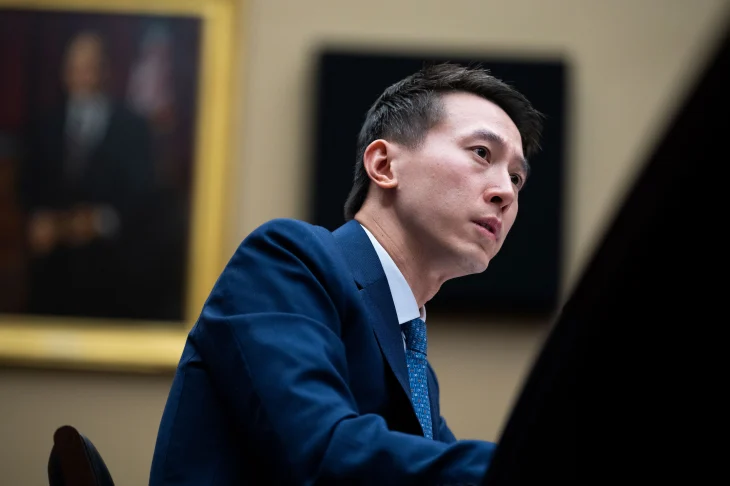TikTok CEO Shou Zi Chew provided some insight into how the company vets potentially underage users on its platform during a current Congressional hearing, amid questions about TikTok’s use of biometrics. After denying that the app collects body, face, or voice data to identify its users — beyond what is required for the app’s in-app AR filters to function — the executive was asked how TikTok determines the age of its users.
Chew’s initial response was predictable: the app employs age gating. This is the most common method, which simply asks a user for their birthdate in order to determine their age. TikTok offers three different experiences: for users under the age of 13, younger teens, and adults 18 and up — which experience the user receives is determined by their age.
Of course, relying solely on this method is problematic because children frequently lie about their age when signing up for social media apps and websites.
TikTok, it turns out, is doing more than just looking at the age entered into a text box.
Chew stated during the hearing that TikTok scans users’ videos to determine their age.
Also, read:
Canva introduces a slew of new features, including several AI-powered tools
“We have also developed some tools where we look at their public profile, to go through the videos that they post to see whether…,” Chew began, before being interrupted by Rep. Buddy Carter (R-GA), who interjected, “That’s creepy. Tell me more about that.”
When Chew was able to continue, he explained “It’s public. So if you post a video, you choose that video to go public — that’s how you get people to see your video. We look at those to see if it matches up the age that you talked about it,” he said.
“Now, this is a real challenge for our industry because privacy versus age assurance is a really big problem,” Chew said.
An interesting follow-up question to the CEO’s response would have been to ask how TikTok was scanning these videos, what specific facial recognition or other technologies it uses, and whether those technologies were built in-house or if it relied on third-party facial recognition tech. Then there’s the question of whether any of the data associated with the user’s age is stored permanently rather than being used to simply boot the user off a TikTok LIVE stream, for example.
Carter, unfortunately, did not pursue this line of inquiry.
Rather, he chastised the CEO for dismissing age verification as an industry-wide problem.
“We’re talking about children dying!” he exclaimed, referring to the dangerous challenges made viral by apps like TikTok and others, such as the blackout challenge. (That challenge resulted in TikTok removing some half a million accounts in Italy to block underage users from its platform at the request of the local regulator.)
The reality is that age verification is an industry-wide concern, and the lack of US laws governing children’s social media use forces companies like TikTok and others to develop their own procedures.
Instagram, for example, only started verifying users’ ages last year by giving them three options. Users could upload an ID, record a video selfie, or request that mutual friends verify their age on their behalf. The latter is relatively simple to avoid if you have good friends who are willing to lie for you.
TikTok’s strategy has been less clear. The company does document how to verify your age if it incorrectly identified you, such as if you were kicked off LIVE for appearing too young. (Last fall TikTok announced it was raising the age requirement for using its in-app live streaming service, TikTok LIVE to 18, up from 16).
According to Bloomberg, TikTok met with two providers of facial age estimation software in 2021. Both companies offered software that could distinguish between children and adults, but a TikTok executive nixed the deals due to concerns that facial scanning like this would raise concerns that China was spying on child users, according to the report.

















